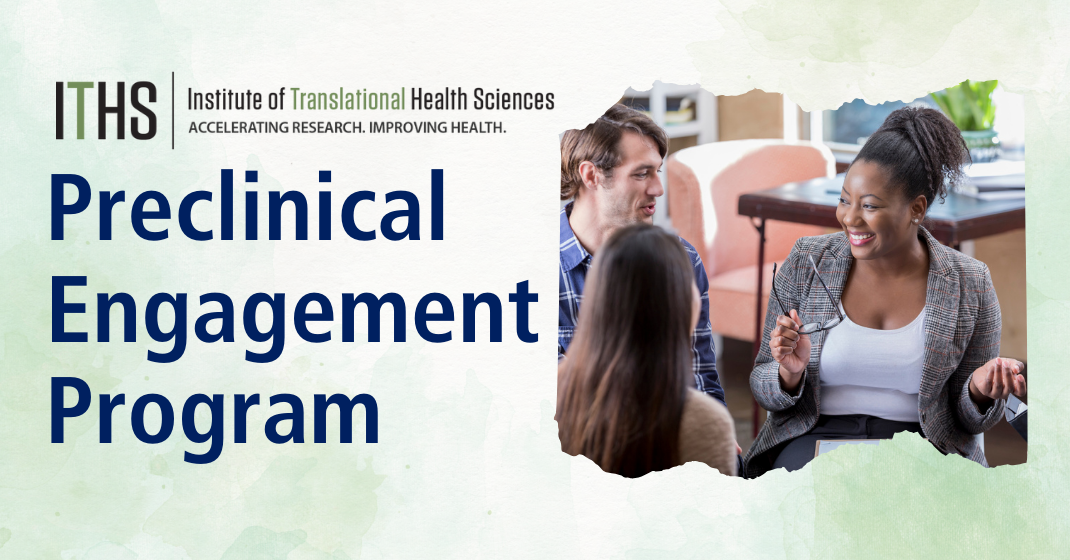
12 Sep ITHS announces new data access tool: Leaf
When preparing a new grant or setting up a study, it is important to know about the patient population through which the research will be conducted. With medical information being stored in electronic systems, data can become available to investigators for answering these important questions in new and simpler ways. However, searching through datasets can be intimidating and incredibly time consuming for those who are unfamiliar with computer languages or querying large datasets.
In collaboration with UW Medicine, ITHS has developed a new tool called Leaf which provides investigators with a user friendly self-service interface to scan data sets and generate reports which can provide essential information throughout the clinical research process. Tools like this help investigators understand the clinical landscape within which they are working to better frame research questions and design clinical research that will meet recruitment goals.
In providing data access, Leaf offers investigators insight into the electronic health records such as:
- Demographic data
- Cohort identification and research criteria
- Departmental statistics regarding visits and diagnoses
- Data visualization
- Abstraction of identified or de-identified data for quality improvement
Early adopters share feedback
To get a more detailed grasp on how Leaf is being used, we sat down with two early adopters to learn about how it has improved their research practices.
Brianna Mills, PhD
Research Scientist, Harborview Injury Prevention & Research Center
As a research scientist, Dr. Mills provides support for researchers across her department. Dr. Mills frequently gets questions such as, ‘how many rural surgery trauma patients do we have?’ Before Leaf, she would have to code individual queries in SQL (a computer programming language) to access the complex data system and find an answer. “This method would have been like using a power tool when you need a pen,” explains Mills, referencing that most of the answers she needs are simple.

With Leaf, instead of spending an hour per week, this takes about 10 minutes.
Having another option to access the data takes the pressure off of those with advanced SQL skill. With Leaf, many researchers can answer basic questions themselves regardless of their SQL familiarity or budget to hire an outside consultant. This is especially helpful when seeking estimations for a new grant submission. Since only approximations are needed, seeking complete detailed data would not be the best use of resources. Additionally, using a consultant can result in a miscommunication between investigator and the data expert regarding the goal for a given data query. Leaf puts the investigator in the driver’s seat to minimize misinterpretation.
Specific work that Dr. Mills has done using Leaf
- Tracking when participants come back to the hospital for follow-up visits for longitudinal studies. The hospital data system is built on measuring individual encounters or visits, whereas researchers often need to look at the patient level data. Leaf can provide data in which repeated or follow-up visits are associated with a single patient record.
- Accessing medical records through Leaf can help fill in the blanks from trial participants when certain information is missing from the study data. Previously, Dr. Mills would have had to review individual charts to get this information.
- Identifying potential study participants. For one of Dr. Mills’s studies, Leaf is set-up to do a weekly search for new patients that have a specific code which could match a bicycle related injury. Those individual cases are then reviewed by the study team to see if they match their specific inclusion criteria. If there is a match, the study team can send a survey directly to the patient. Without Leaf, this process would be a lot more labor intensive to set up the query in SQL, match previous data sets to eliminate potential duplication, and extract the data into a different interface that is easier for the study team to work with (such as excel). “With Leaf, instead of spending an hour per week, this takes about 10 minutes,” Dr. Mills pointed out.
Matthew Bartek, MD, MPH
Research Fellow, UW Surgical Outcomes Research Center
Dr. Bartek, a self-identified ‘technophile’ was eager to find better ways for navigating the complex hospital data systems. As a research fellow, he works on database related projects and is responsible for putting together a clinical trial. “Leaf is a robust way of getting an estimate for how many patients would be eligible for a potential clinical trial” said Dr. Bartek, emphasizing that without Leaf, he would have to either spend time talking to individual physicians in order to obtain their personal patient lists, pay for an Amalga consult, or have a medical student spend hours reviewing hospital chart information.

During research meetings, he would repeatedly hear that other doctors simply do not know how many patients are coming through the hospital with a given condition. ‘We just don’t know how many hysterectomies were done in the past year’ someone would say. Now, Dr. Bartek could interject; “with Leaf, I became the guy who could take out my computer and provide that number.”
In addition to being the hero at a research meeting, Dr. Bartek utilizes Leaf to identify a potential study cohort and prescreen candidates through their existing data. In one instance, out of curiosity, Dr. Bartek used Leaf to search the database by diagnosis and then compared the output to his physicians’ lists. It was apparent that there were patients who qualified for the study whom he would not have found without Leaf, causing a missed opportunity for both the patients and the study team. “Leaf is an incredibly powerful tool,” summarized Dr. Bartek.
Important Note
Due to its direct access to the university health data system, Leaf is currently only available to investigators and research teams affiliated with the University of Washington Medicine department who have an AMC account. For investigators not affiliated with UW Medicine, please submit a consultation service request to the BMI team to learn about cohort discovery and obtaining data.







